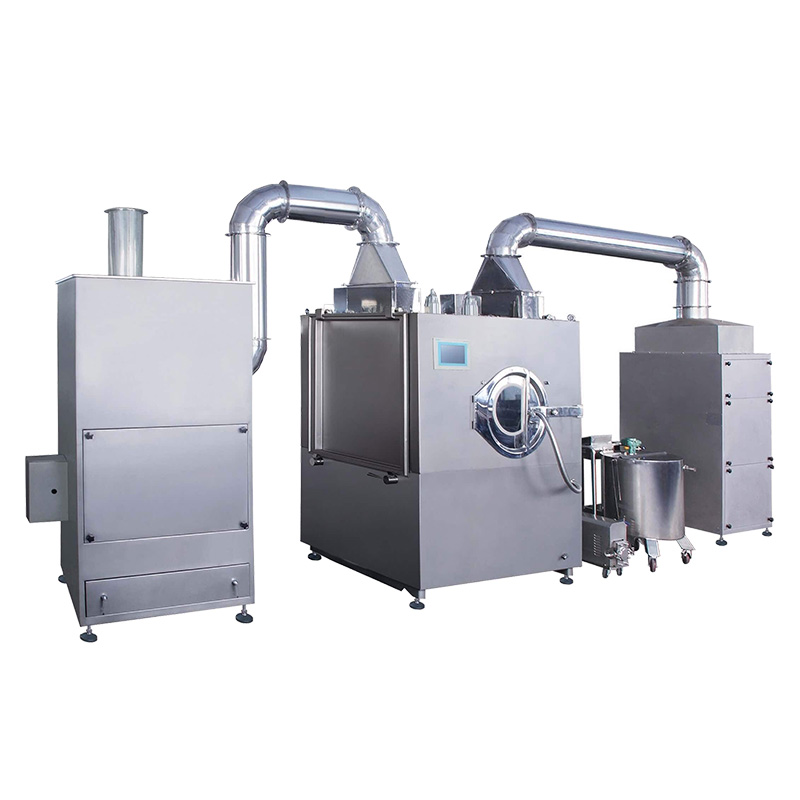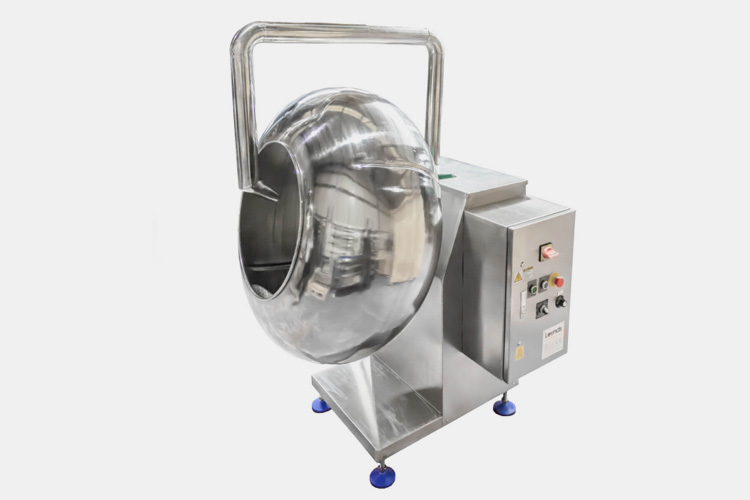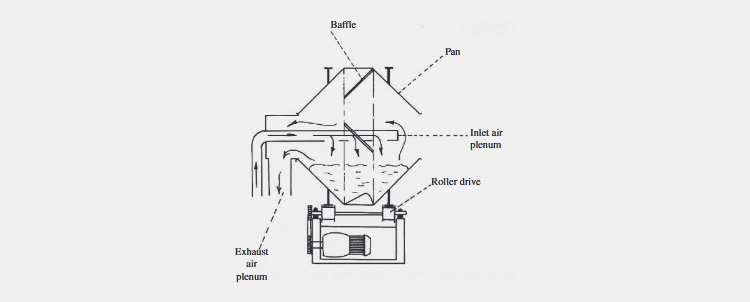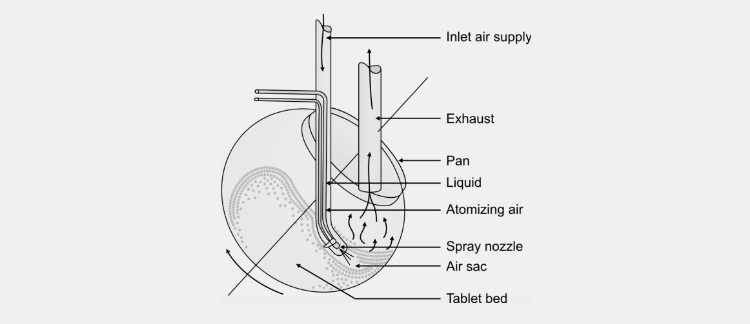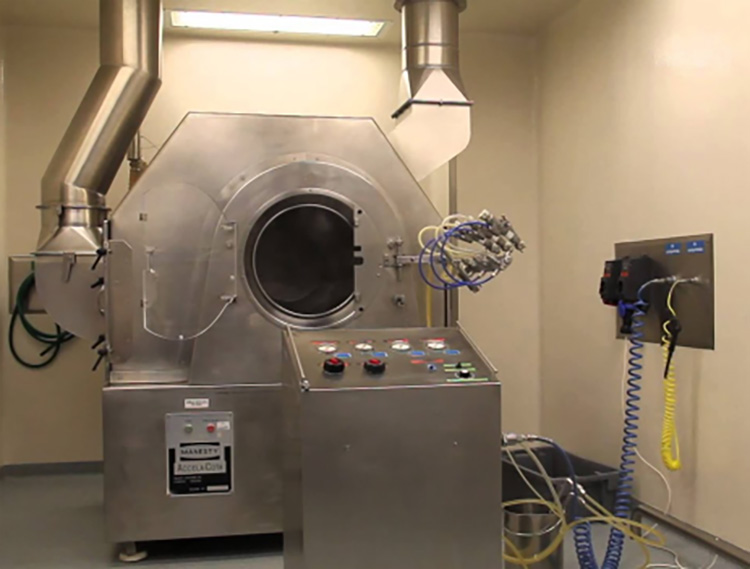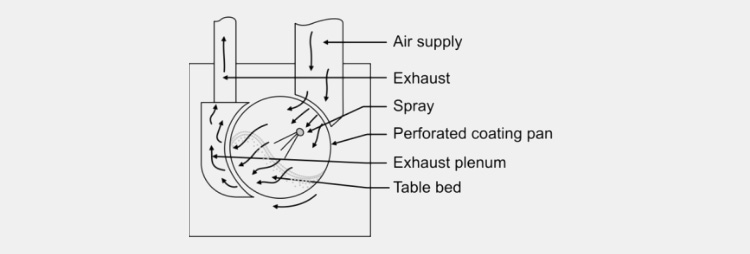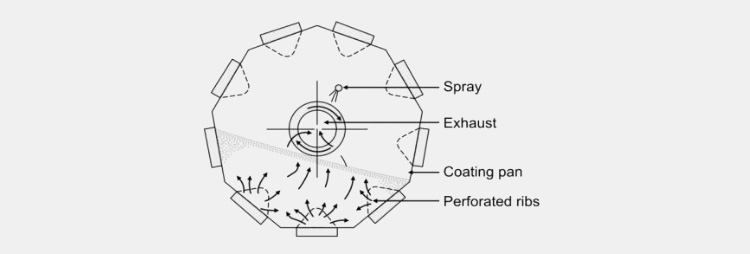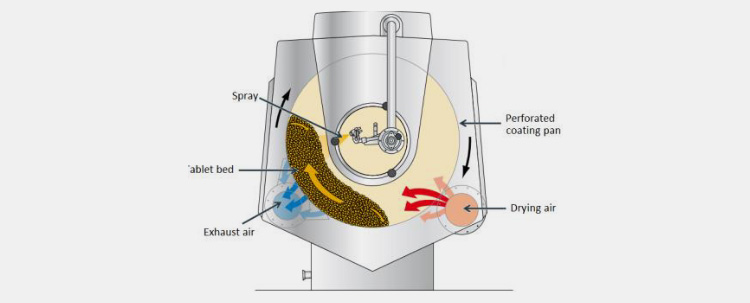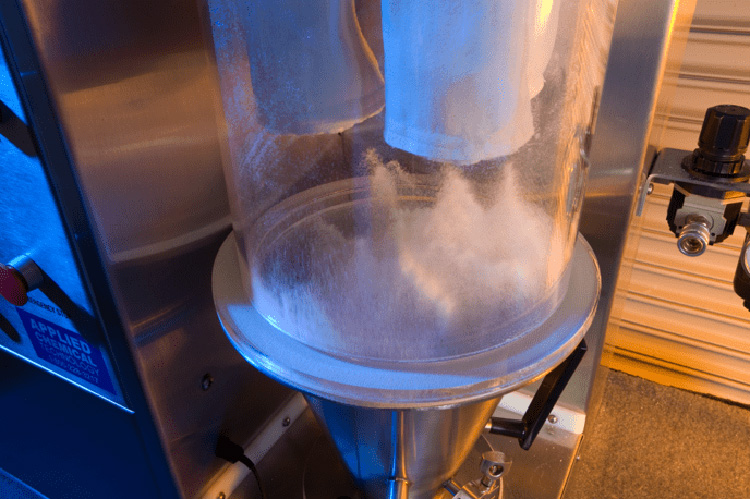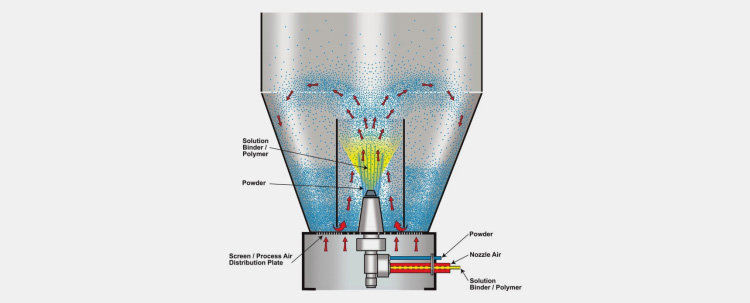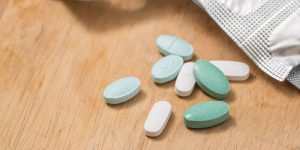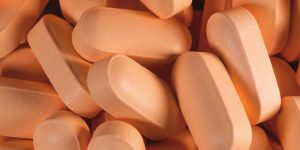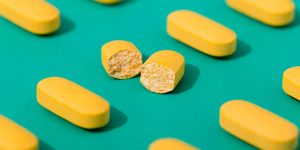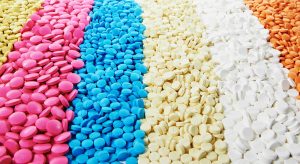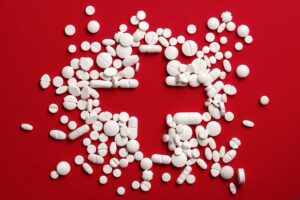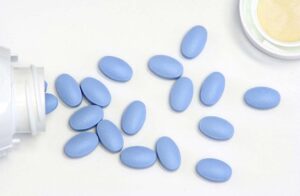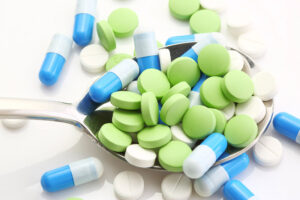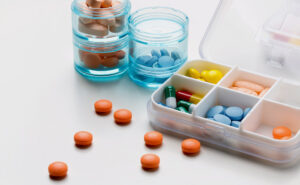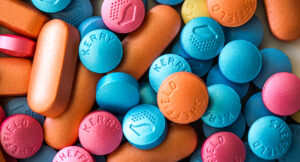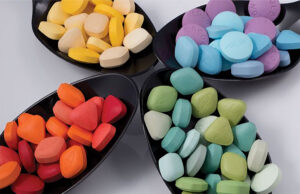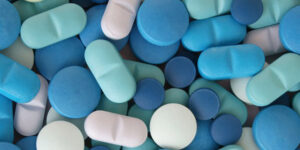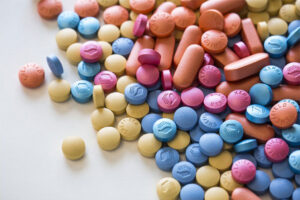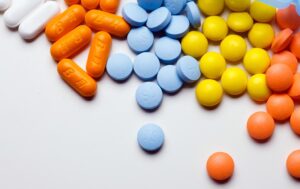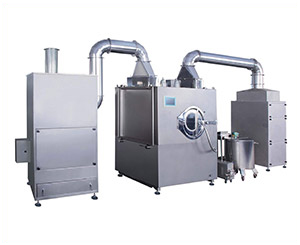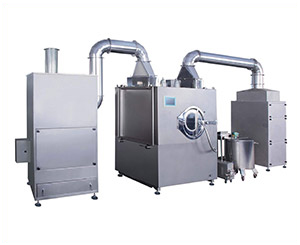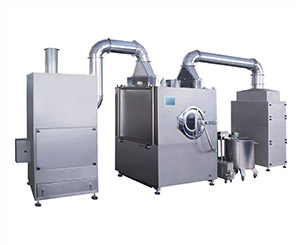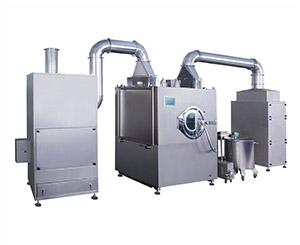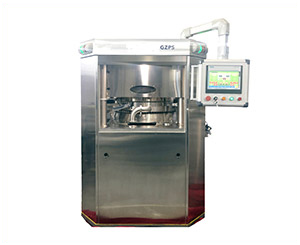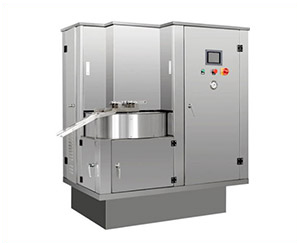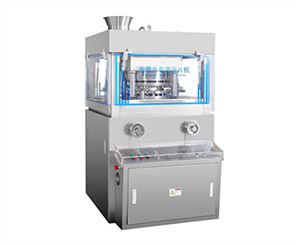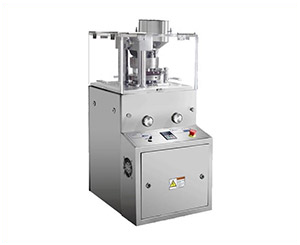Types Of Tablet Coating Machine
Tablet coating is one of the oldest and most desirable pharmaceutical techniques still in existence.
Do you know sugar coating is derived from the confectionery industry possibly one of the traditional approaches to tablet coating?
Tablet coating machines are technical equipment that applies a fundamentally dry, delicate layer of coating material over the surface of the tablet. However, this method accomplishes certain benefits over the uncoated tablet. There are several classifications of tablet coating machines currently present in the market. Each of them has superb features in its right way.
In this review, we focus on the types of tablet coating machine, their working principle, advantages, certain drawbacks, major differences, and so on.
Ⅰ.What are the different types of tablet coating machines?
There are different types of tablet coating machines present in the market.
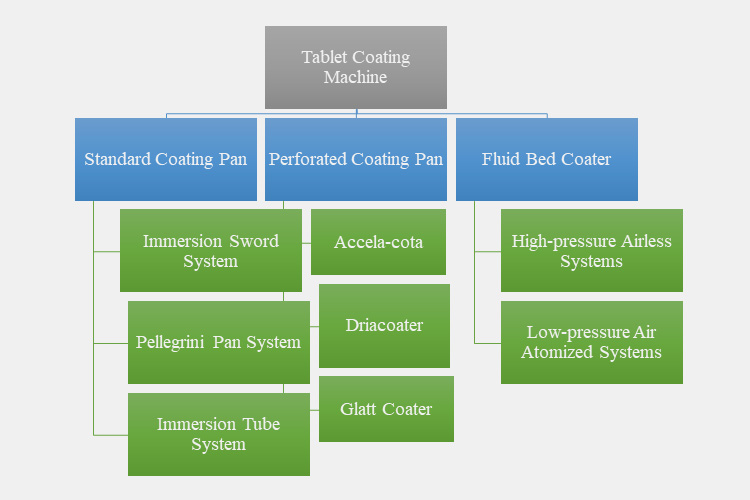
Tablet coating machines are classified into three main types on the basis of their working principle and design.
- Standard Coating Pan
- Perforated Coating Pan
- Fluid Bed Coater
1.Standard Coating Pan
These are also called conventional, traditional, or non-perforated coating pans. They have wide applications in industrial platforms.
History
The procedure of sugar-coating tablets was first designed by William Warner in 1856. A conventional coating pan was introduced around the same time.
Standard Coating Pan
Design
This instrument is a pear, circular or hexagonal-shaped container, mounted at the angle of 40-45° on the benchtop. This coating pan has a diameter of 8 to 60 inches (15 to 200 centimeters). This machine is equipped with a motor that provides power for the rotation of the pan on a horizontal axis.
Working Principle
The coating process in a standard coating pan begins with the loading of tablets. The machine rotation causes the tumbling of tablets around the container. The atomized coating solution is sprayed by nozzles resulting in an even distribution of coating materials on tablets.
Afterward, heated air is introduced into the pan and passes on the tablet bed causing in drying of the solution.
Advantages
- The coating procedure in a standard coating pan does not cost much.
- These machines are easily cleaned of dust and debris as they do not have perforations.
- Tablets have low chipping and breakage rate in a standard coating pan.
- These pans can easily coat products of any size ranging from minitablet or 50-millimeter chewing gum.
Applications
Colorful, sugary, and chewable tablets are all because of standard coating pans. Applications of these machines in some industries are mentioned below for your information.
- Food
- Confectionary
- Pharmaceutical
- Nutraceutical
Classification of Standard Coating Pan
The standard coating pan is modified in three different ways in order to improve the drying efficiency. The modifications in the design of conventional coating pan are:
Ⅰ.Immersion Sword System
This system has a perforated sword-like structure fixed in the table bed for supplying hot air inside the pan. This causes through mixing and effective drying.
Ⅱ.Pellegrini Pan System
Baffle and diffuser are present in the Pellegrini pan system for uniform circulation of dry air on the tablet bed, which ensures rapid drying.
Ⅲ.Immersion Tube System
In this machine, a tube is immersed in the pan and has a built-in spray nozzle (located at the top) for delivering both coating solvents and hot air. The hot air moves upward and helps in the drying of the solution.
2.Perforated Coating Pan
Perforated coating pans are the most popular choice of coating instruments now a day. These are widely utilized for film coating tablets and pills.
History
With the discovery of volatile compounds for the coating of tablets, traditional coating pans changed into perforated coating pans. The practice of using perforated pans was facilitated by FDA rules of installation explosion-proof in the 1980s.
Perforated pans were first used to apply an aqueous coat to tablets in the early 1990s.
Design
This machine is composed of a fully or partially perforated drum housed in an airtight enclosure.
Angled baffles are fixed inside the drum. The movement of these baffles causes tablets to lift and turn.
Working Principle
In a typical perforated pan operation, the spray nozzles are used for coating tablets while the drum is rotating around a horizontal axis. The rotation of drums and baffles is important in the uniform coating of tablets.
The hot air enters the pan from the upper duct and flows diagonally through tablets consequently vaporizing excess coating solution.
Advantages
- Perforated pans have high drying efficiency thus application of a second coating solution is possible in less time.
- Perforated pans are power-efficient machines.
- These machines perform uniform and even coating in a short time.
- The balance between incoming and released air does not allow leakage of solvents on tablets beds, thus preventing the hazardous explosion.
Applications
Perforated pans are high in demand in various industries to improve the appearance and aesthetic of products. Some applications of these machines are:
- Food
- Chemical
- Fertilizer
- Confectionary
- Pharmaceutical
- Cosmetic
- Agriculture
Classification of Perforated Coating Pan
Perforated coating pans come in several designs. Some design examples of these coating pans are:
Ⅰ.Accela-Cota
Accela-Cota or Hi-coater systems are circular pans, revolving about the horizontal axis with curved perforated sides.
The ends of a pan are conical so that tablets get inverted and mixed with the coating solution during rotation.
Ⅱ.Driacoater
Driacoater is equipped with hollow perforated ribs present along the periphery of the rotating pan. When the pan rotates, these ribs go inside the product bed, supply the hot air to the tablet bed and assist in tablet drying.
Exhaust air is released from the duct located at the back of the pan.
Ⅲ.Glatt Coater
Glatt coater is a novel form of a perforated pan, having fully perforated drums for maximum spraying rates in a shorter time.
Drying air enters either from inside the pan and goes to the tablet bed or from pan perforation in a reverse manner for incomplete fluidization of tablets.
This passage of hot air aids in reducing air turbulence and achieving an ideal coating effect.
3.Fluid Bed Coater
Fluid bed coater or air suspension systems are efficient coating instruments and are used for film coating.
History
Dr. Dale Wurster first invented these suspension systems in the 1950s.
Design
This machine is the vertical chamber in which tablets are suspended and air moves upward. Coating agents are delivered by spray guns located at the top or bottom of the column.
Working Principle
The incoming hot air moves the suspended tablets upward and outward towards chamber walls and then to the bottom of the column. These tablets then re-enter the stream and the process is repeated several times for a thorough coating of tablets.
Advantages
- These machines perform efficient coating due to maximum contact between suspended tablets and coating solution.
- These systems are well suited for multiparticulate tablets.
- Continuous spraying of coating agents in these machines reduces the coating time.
- High recovery rate of organic solvents in fluid bed coating machines.
- There is minimal chance of environmental contamination as every process- from loading to coating is performed in enclosed container.
Applications
Fluid bed coater increase the aesthetic appeal of dietary tablets and boost their savory taste. These systems have several applications in industries like:
- Pharmaceutical
- Chemical
- Food
- Animal feed
- Confectionary
Classification of Fluid Bed Coater
Fluid bed coater are further classified into three types depending upon spraying techniques.
- Top Spray
- Bottom Spray
- Tangential Spray
Ⅰ.Top Spray
A top spray is the classical form of fluid bed coaters. They are having spray nozzles fixed in the upper part of the chamber. The purpose is to apply the solution in a downward direction as the fluidizing air is moving upward.
Most often a top spray results in an uneven coat thickness. That’s why this is not commonly practiced.
Ⅱ.Bottom Spray
Bottom spray arrangement or Wurster is the preferred choice of fluid bed coaters as these systems provide a superior quality coating.
Unlike a top spray, the spray guns in wursters are present in the bottom part of the column. The direction of the spraying solution is the same as of hot air resulting in the homogenous covering of tablets.
Ⅲ.Tangential Spray
Tangential Spray or rotary granulator is the latest innovation in fluid bed technology and is similar to bottom spray apart from the rotation of tablets by means of the rotary disc which are powered by a motor.
Ⅱ.What are the differences between a standard coating pan and a perforated pan system?
Standard Coating VS Perforated Coating
Standard coating pan and perforated coating pan are commonly used for coating of various products. Both rotates around the horizontal axis but there are differences in construction and working. Such as:
Design
Standard coating pan is a circular container fixed at 45° angle on the bench top. Whereas, perforated coating pan is completely, or partially perforated drum enclosed in the sealed housing.
Uses
Perforated coated pans are readily utilized for both sugar and film coating. Standard coating pan is mostly used for sugar coating.
Film coating is not possible with standard coating pan without making necessary adjustments in these machines like installation of spraying systems.
Volatile Solvents
Standard coating pans are not suitable for handling volatile organic solvents as irregular movement of incoming and exhaust air can cause leakage of solvents into tablet bed.
There is proper balance between inlet and exhaust air supply due to perforation making perforated coating pans good candidates for coating organic solvents.
Mixing Efficiency
Mixing efficiency of standard coating pan is low because of decreased product movement or dead spots. Whereas, due to the presence of baffle a perforated coating pan boosts the movement of tablets and coating ingredients ensures premium mixing capabilities.
Drying Process
In standard coating pan, most of drying occurs on the tablet bed which results in low drying efficiency.
In perforated coated pan, drying of coated solution takes place by introducing air through perforation in the drum, which increases the interaction between tablets and air resulting in high drying productivity.
Conclusion
Indeed, types of tablet coating machines holds prime importance in the pharmaceutical sector. Along with tablet processing, tablet coating is essential to enhance attractive appearance and brand.
Aipak offer several processing variants of tablet coating machines suitable for small to large businesses. The high-tech experts, comprehensive services and turnkey machinery focuses on what you’re looking for. We are here to help you! Contact us with your few details to get our respond right now.
Don't forget to share this post!
Tablet Coating Machine Related Posts
Tablet Coating Machine Related Products
Tablet Coating Machine Related Videos
CONTACT US
Tell us your raw material and project budget to get quotations within 24 hours.
WhatsApp Us: +86 181 6426 8586
Want the best price & newest pharmaceutical machinery buying guide,tips and trends sent straightly to your box?Sign up for Aipak’s monthly newsletter,we’re free for your consultation and Offer you the most suitable solutions!
The Buyer's Guide
- Capsule Filling Buyer's Guide
- Blister Packaging Buyer's Guide
- Tablet Counting Buyer's Guide
- Tube Filling Buyer's Guide
- Cartoning Buyer's Guide
- Gummy Making Buyer's Guide
- CO2 Extraction Buyer's Guide
- Empty Capsules Buyer's Guide
- Suppository Filling Buyer's Guide
- Tablet Coating Buyer's Guide
- Tablet Press Buyer's Guide
- Softgel Encapsulation Buyer's Guide
Most Popular
- 7 Importance Of Pharmaceutical Packaging In Different Applications You Must Know
- 6 Advantages You Must Know About Tablet Counting Machine
- 8 Advantages of Blister Packaging You Must Know
- 6 Critical Applications of Automatic Capsule Filling Machine
- 6 Stations You must Know to Improve the Filling Quality of Automatic Capsule Filling Machine
